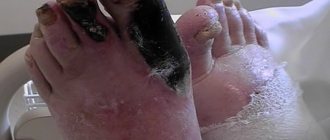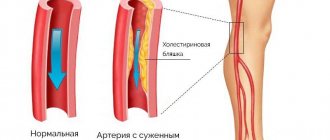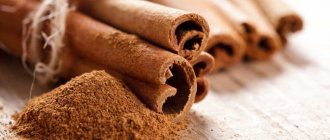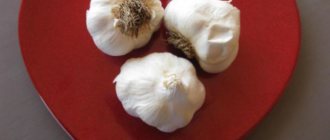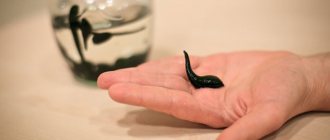Do leeches help with varicose veins?
Since varicose veins are a pathological expansion of the lumen of veins under the influence of a variety of factors as a result of weakness of the venous wall, the question of the advisability of using hirudotherapy for varicose veins always raises doubts among patients. The fact is that with a developed pathology, a person’s veins are accustomed to increased pressure, and the outflow of blood can provoke even greater stagnation in problem areas of the blood flow.
However, for varicose veins, hirudotherapy is often prescribed. For what? Leeches, which are used to treat affected veins, release into the blood during a bite, along with saliva, a specific secretion, which contains many special enzymes and biologically active substances with blood thinning properties, first of all. In addition, the medicinal components of bloodsucker saliva have antithrombotic, anti-inflammatory, and regenerating properties. It is the secretion of leech saliva that overcomes varicose veins, and not the fact of bloodletting itself. Moreover, saliva is absolutely non-toxic, so the risk of negative side effects is minimized.
But leeches for varicose veins should be applied by a phlebologist and no other specialist: you need to know the very points that will bring benefit and not harm. Hirudotherapy for vascular pathology of this nature does not give immediate results; treatment is cumulative: the accumulation of biologically active components in the blood must occur. Only a course of therapy with leeches can help the veins restore the elasticity of the walls and their original shape, remove venous nodes, spider veins, mesh or minimize their visualization. The essence of a hirudotherapy session is the gradual effect of leech saliva secretion circulating in the blood on the vascular wall.
Leeches for varicose veins of the lower extremities help relieve pain, pastiness, discomfort in the legs, improve lymph flow, balance vascular permeability, normalize microcirculation, minimize the risk of thrombosis, reduce the size of already forming blood clots, and stop inflammation.
Carrying out the procedure
Before applying leeches to treat varicose veins, the patient must undergo all necessary examinations. This will help the specialist select the necessary treatment regimen and calculate its duration (number of procedures and courses).
A hirudotherapy session for varicose veins is carried out in the following order:
The procedure must be performed by an experienced specialist
- The problem area is identified and prepared , the hair is removed, the skin is wiped with alcohol and then with hot water. The latter is necessary to eliminate the alcohol odor and stimulate blood flow.
- The specialist distributes the worms according to one of the accepted schemes; individuals are placed directly from the test tube, since touching them with fingers or tweezers can irritate them, which can negatively affect the procedure itself.
- The duration of the event is approximately 20-40 minutes ; this time is enough for the worm, having eaten, to fall off on its own. Before this time, you cannot remove the attached leech from the skin. If such a need arises, apply a cotton swab moistened with an alcohol or saline solution to the back of the worm.
- At the end of the event, bandages are applied to the bite areas and compression stockings are applied.
- After the procedure , used individuals are destroyed in a chloramine solution.
A positive effect can be observed after the first session, which is expressed in a decrease in pain and swelling in the legs.
Reference. The course includes up to 10 procedures.
Possible negative consequences
Sometimes improper treatment with leeches for varicose veins in the legs can cause undesirable negative effects:
- acute allergies up to anaphylaxis in the absence of a preliminary allergy test;
- infection of the bite site due to non-compliance with the rules of asepsis and antisepsis;
- uncontrolled, prolonged bleeding, if the patient’s prothrombin index was not determined the day before;
- extensive hematomas due to an incorrectly chosen suction point or ignoring a blood clotting test;
- hypotension due to blood outflow;
- inflammation of the lymph nodes due to impaired drainage function;
- the formation of trophic ulcers as a consequence of an individual reaction to the saliva of leeches or a violation of the hirudotherapy technique.
Undesirable effects and contraindications
Despite the fact that reviews of the treatment of varicose veins with leeches are mostly positive, some patients should be careful when choosing a therapeutic approach. Patients with the following diagnoses should refuse hirudotherapy or postpone its implementation:
- tendency to allergic reactions;
- history of reaction of the immune system to biological fluids of the worm;
- arterial hypotension;
- oncological diseases;
- acute phase of thrombophlebitis;
- hemophilia;
- anemia of any origin;
- pregnancy;
- some skin diseases;
- other pathologies of the blood coagulation system.
Where to place leeches for varicose veins of the legs: diagram
Hirudotherapy stimulates specific energy or acupuncture points. In fact, it is an analogue of reflexology and acupuncture. In each case of varicose veins, an individual scheme works. The suction points for leeches are selected by the hirudotherapist, taking into account the stage of the pathological process and the physiological characteristics of the patient. The average scheme looks like this: leeches are never placed directly on the affected veins - this risks developing uncontrolled bleeding. The doctor selects those places where there are no great vessels.
Leeches should be placed in a checkerboard pattern: never on the same level. From two to four leeches are applied to the area of the affected vein. The session is considered completed when the leech falls off on its own, having sucked blood. Individuals are not reused; they are disposed of after each session.
Suppliers of leeches are special nurseries; natural bodies of water are not suitable for hirudotherapy, since there is a high risk of infection.
About the benefits of leeches
Hirudotherapy specialists talk a lot about how great benefits medicinal leeches can bring.
The main therapeutic effect of their use is to increase blood supply to the area of the body where they were placed, as well as to the organs that are located in the area of this area.
Thanks to this, blood microcirculation improves, swelling decreases or completely subsides, existing blood clots are destroyed and the likelihood of new ones forming is reduced.
What other benefits do leeches have? From the huge list of beneficial hirudotherapy effects on the human body, the following can be highlighted:
- The blood thins and its coagulability decreases (anticoagulating effect), the formation of blood clots is prevented;
- The supply of tissues and organs with blood and the oxygen it supplies improves;
- Harmful microorganisms are destroyed (anti-inflammatory, bacteriolytic, bacteriostatic effect);
- Swelling is relieved, toxins are eliminated;
- Decongestion of internal organs occurs, that is, muscles relax and neuromuscular transmission of impulses improves;
- The immune system is stimulated, immunity increases and strengthens;
- Blood pressure decreases and returns to normal.
The healing effects of hirudotherapy are formed from the following mechanisms:
- Reflex – the leech bites through human skin in those places where biologically active points of the body are located;
- Mechanical – regional blood flow is unloaded;
- Biological - the secretion of the salivary glands of the leech contains hirudin, which suppresses the activity of the thrombin enzyme and reduces blood clotting.
How much does hirudotherapy cost?
Today, the patient has to pay for each course: hirudotherapy is not recognized by official medicine and is not included in the procedures under the compulsory medical insurance policy. Since the result cannot be achieved in one go, material costs can be significant, that is, it is necessary to immediately assess the financial possibilities for course therapy. Otherwise, all efforts will be useless.
One session of hirudotherapy can cost differently. It all depends on the number of leeches used and the region of residence of the patient. On average: up to 4 individuals cost one and a half thousand rubles, up to 7 - two thousand, up to 12 - two and a half thousand, and more - from three thousand rubles.
Duration and frequency of sessions
The average amount of time required to treat varicose veins with leeches is 30-40 minutes. During the first five minutes, the main part of the bioactive substances necessary to relieve the most obvious symptoms of varicose veins is released. After this, leeches produce only about 30% of the beneficial juices that enter the bloodstream. Accordingly, you can remove the worms within 5-7 minutes from the start of the procedure. But it is still believed that it is better to keep the leeches until they are rejected on their own.
When the worm has already “taken” the required amount of blood and moved away from the skin, it should be removed. Liquid ichor may be released at the site of the bite for a long time. This is not dangerous to life and health, but nevertheless, you should still treat the wound with a solution of hydrogen peroxide and apply a sterile bandage.
Sometimes the leech “does not want” to lag behind the skin on its own. In this case, you can use any alcohol or iodine solution. They moisten a cotton swab with it and bring it to the mouth of the worm, after which it instantly peels off. However, if this method does not help, you need to apply the edge of the cotton swab to the back of the leech. A concentrated saline solution can also be used to repel them.
The number of treatment procedures depends on the number of leeches applied. If up to four worms are used at a time, then sessions can be carried out daily. If this indicator is exceeded, you should focus on the recommended break periods. As a rule, they last from 4 to 7 days when applying from 5 to 9-10 individuals, respectively.
To achieve the desired result, it is enough to conduct 7-10 sessions of hirudotherapy. Nevertheless, many patients notice a positive effect after just a single visit to a hirudotherapist. It is important to remember that the interval between courses of treatment should be at least 1-2 months from the completion of the most recent procedure.
How to prepare for hirudotherapy
Preparation for the procedure is simple - it is important on the day of the procedure not to wash using products with too strong a fragrance. You should also not use perfume or any cosmetics with a scent. Leeches react sharply to such aromas and simply do not stick to the skin.
To remove any possible odors, even before the procedure, the doctor wipes the patient’s skin with an alcohol solution and warm water. There should also be no hair on your legs during the procedure.
Important! Before the hirudotherapy procedure, you should not drink alcohol. Alcohol not only can increase bleeding, it is eliminated from the body, including through the pores. This is one of the reasons for the unpleasant odor after drinking alcohol.
Features of the session
How to apply leeches for varicose veins and in what quantity is decided by the doctor before the start of the procedure. Regardless of the choice of scheme, there are several rules:
- Leeches are never placed on veins affected by varicose veins.
- You should not place leeches on any mucous membranes.
- The optimal location of individuals is along diseased vessels at some distance from them.
The treatment itself goes as follows:
- The patient is asked to lie down on the couch.
- The surface of the skin where the leeches will be placed is pre-disinfected.
- Individuals are placed on average for half an hour, in some cases the session lasts longer.
- The leeches should fall off on their own, which will mean the end of the procedure.
- If the leech is on the body for more than half an hour, the doctor removes it with his own hands, using tweezers or plain water.
- Sterile bandages are applied to the bite sites - the wounds may bleed for some time.
The duration of the course of hirudotherapy is determined by the doctor; treatment is selected individually for each patient. Sessions are held regularly with a break of two or three days. Carrying out hirudotherapy at home is highly not recommended, since there is a high risk of error, which can result in very heavy bleeding. In addition, this treatment has a lot of contraindications, so it is impossible to treat varicose veins with this method without a preliminary examination.
Important! The same leeches are never used more than once. Firstly, they can become carriers of infections, and secondly, one individual is able to digest the blood obtained during the procedure for up to six months.
Can you get infected from leeches?
The main rule of hirudotherapy is that each leech can only be used once! That is why treatment must be carried out in a specialized institution with a qualified doctor.
Otherwise, infection is really possible. Once the pathogen enters the body of the worm, it remains active in it for some time. Almost all bacteria and viruses die a month after a leech is infected, but before this point there is a possibility of the danger being transferred into the human body.
Contraindications to treatment with leeches
Regardless of whether you want to undergo treatment with a hirudotherapist or do the procedure yourself, you must first consult with a therapist. This is necessary in order to determine the possibility of using hirudotherapy, since such a procedure has a large number of contraindications. Thus, it is not recommended to use leeches to treat varicose veins of the lower extremities in the following cases:
- The presence of any oncological processes;
- Systemic blood diseases;
- Low pressure;
- The presence of diseases in the acute stage, as well as chronic infectious diseases.
Also, the procedure cannot be performed during pregnancy, regardless of trimester, within 4 months after any surgical intervention, or when taking medications that help reduce blood clotting.




